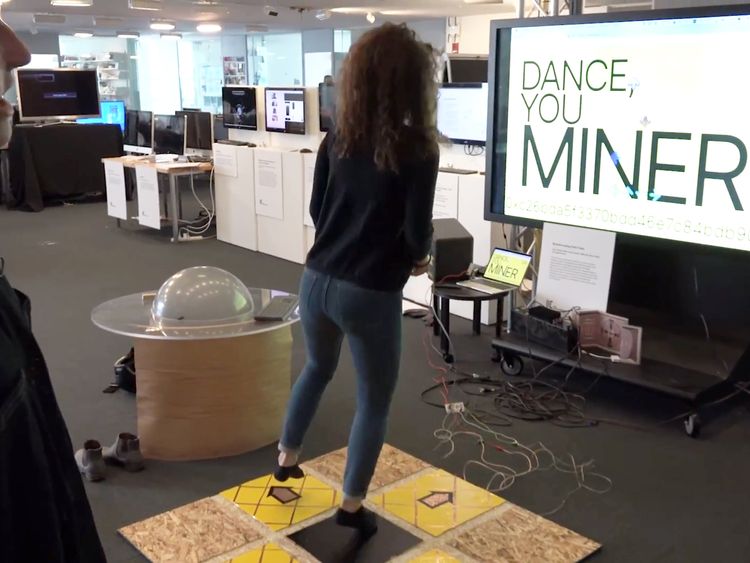Students at the Massachusetts Institute of Technology have invented a way to mine cryptocurrency by playing classic arcade game Dance Dance Revolution.
Agnes Cameron and Kalli Retzepi initially created the DDR mat that mines cryptocurrency on a private Ethereum blockchain for a party.
Using the mat "hundreds of dancers" collectively mined about 10,000 blocks – the files which record cryptocurrency transactions and are tied together in the blockchain.
Typically blockchains use complicated cryptographic puzzles which force computers to prove the amount of work they've done to process transactions, but the team's private blockchain makes people dance instead.
By swapping out computer processing for dancing. the team could be addressing significant environmental implications as well as the sedentary lifestyle of the post-automation world.
"We've been talking a lot in the group about possible futures that this project could have," said Ms Cameron.
"One of the ideas that has been passed around is that when robots have taken all the jobs, what are we going to do all day? How will we create value? Maybe it's through dancing."
Talking to Sky News, Agnes Cameron said the future-of-work suggestion was a little joke at the expense of "cryptocurrency bros" who have a habit of claiming to have invented "solutions" for post-automation societies.
"There's a lot of utopianism around cryptocurrencies at the minute – and some of it for good reason – but in some camps there's this idea that all the world's problems are going to be solved by blockchain," said Ms Cameron.
"In general, it's good to be wary of the claims people make about these technologies.
"Blockchains are a really interesting application for some very specific use-cases, but they've also become this crazy buzzword, and you see them getting used in all sorts of useless ways.
"That's kind of the style of the video is made in: presenting something really patently useless as some grand solution to the world's problems…"
Ms Retzepi said: "Our aim was to make a game and it's been quite fun (and also surprising) to see how easily it is being taken literally."
So why is it being taken literally? Perhaps both students' engineering backgrounds and their convincing pitch have made the game seem more feasible than it is.

"The dancing is a bit artificial in terms of the network," said Ms Cameron.
"There's nothing to stop you, for example, just using the arrow keys on your computer (or, better, just writing a script to play the game for you), but if we wanted to create a system of 'artificial scarcity' that really did rely on dancing, then you could use force-meters in the pads or something to ensure someone was actually dancing.
"This sounds silly, but it's actually not such a wild proposition. All currency systems require some form of scarcity to operate, and with digital currencies that scarcity needs to be imposed artificially: otherwise someone could just declare they owned billions of bitcoin.
"In mainstream cryptocurrencies that gets tied to an absolute number of total coins, but by tying it to a finite resource – in this case, how much dancing someone can do – you can also propose scarcity limits."
Dance Dance Revolution is also a good suit for the potential cryptocurrency as an "automatic oracle," she explained to Sky News.
More from Science & Tech
An oracle is a way to reliably code real-world events into digital systems, and with DDR "playing the game creates the digital input, you don't have to worry about translating it into something machine-readable (that's why tennis/football might be a lot harder).
"Though less physical, computer games like pong and Nintendo would work: basically anything with a score that can be translated as some measure of effort plus skill."
[contf] [contfnew] 
Sky News
[contfnewc] [contfnewc]







